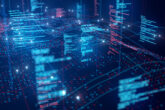May 30, 2024
To Win the Chip War, the U.S. Must Prioritize Revolutionary Research
Commerce Secretary Gina Raimondo has described the effort to boost the U.S. semiconductor industry as a technological moonshot — a mirror of NASA’s famed Apollo program. But this moonshot can only succeed if those behind it dare to dream big — and dream up revolutionary technologies.
Through the Chips and Science Act, the Biden administration has begun to distribute $39 billion in manufacturing grants over five years to semiconductor chipmakers — a shot in the arm for businesses competing against heavily subsidized rivals in East Asia and an insurance policy in the event of Chinese aggression. But in the long run, U.S. success requires maintaining a technological edge, and that means an emphasis on research and development.
Taking big bets on moonshot technologies is the only approach that can sustain Moore’s law and guarantee that the United States continues to lead in the technologies of tomorrow.
The Commerce Department has established a National Semiconductor Technology Center — the NSTC — to deploy up to $11 billion in R&D funds allocated by the Chips Act over the next five years. But what exactly should the NSTC do? We think it should focus on taking big swings, complementing industry while remaining independent of it.
The pace foreseen by Moore’s law — the prediction that the computing power of chips would double every few years — has slowed, imperiling the trend toward better, cheaper computing power. Sustaining Moore’s law is critical to our nation’s future prosperity and security, and to nearly every segment of technology. Guaranteeing another generation of exponential computing advances ought to be the NSTC’s central priority.
Read the full article from The Washington Post.
More from CNAS
-
Technology & National Security
CNAS Insights | The Export Control Loophole Fueling China's Chip ProductionThis week, Reuters reported that China has apparently built a prototype of an extreme ultraviolet lithography (EUV) system, a highly intricate machine used to produce cutting-...
By Michelle Nie, Autumn Dorsey & Janet Egan
-
Technology & National Security
Paul Scharre on How AI Could Transform the Nature of WarPaul Scharre, CNAS Executive Vice President, joins host Luisa Rodriguez to explain why we are hurtling toward a “battlefield singularity” — a tipping point where AI increasing...
By Paul Scharre
-
Energy, Economics & Security / Technology & National Security
Recommendations for Promoting American AI AbroadStrategic Context and Program Objectives The American AI Exports Program is an ambitious and essential proposal to expand the reach of American AI technologies in foreign mar...
By Janet Egan, Geoffrey Gertz, Daniel Remler & Ruby Scanlon
-
Technology & National Security
Defense One Radio, Ep. 200: Paul Scharre Explains the Global AI Arms RacePaul Scharre, executive vice president at the Center for a New American Security, joined Defense One to discuss science and technology. The former Army Ranger explored how AI ...
By Paul Scharre




